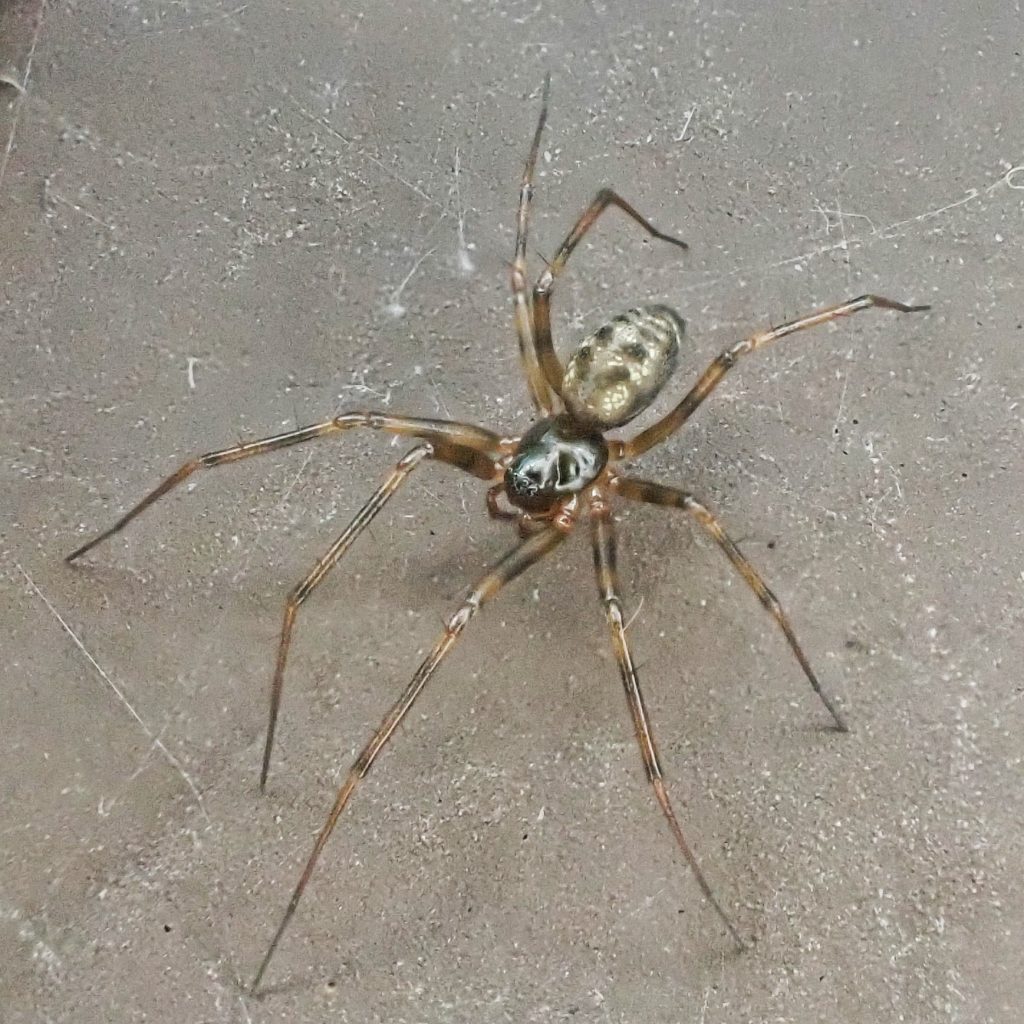
It’s been almost 3 weeks since I decided to dedicate this fall to learning more about spiders, and I have spent a goodly amount of time since then looking for, reading about, and trying to identify spiders, although it has thus far only resulted in adding 7 species to these profiles. But I have certainly learned some things, although much of it, like terminology, is hard to quantify and will probably fade as soon as I quit peering at them under a microscope every day. And one of the biggest things I’ve learned is that I was wrong in thinking that most spiders are mature in the fall. If it is actually true for a majority of spiders, it is a simple majority, not nearly enough to impeach a president or break a filibuster, and nowhere near enough to ratify an amendment, or the 3/4 majority I had assumed prior to this fall.
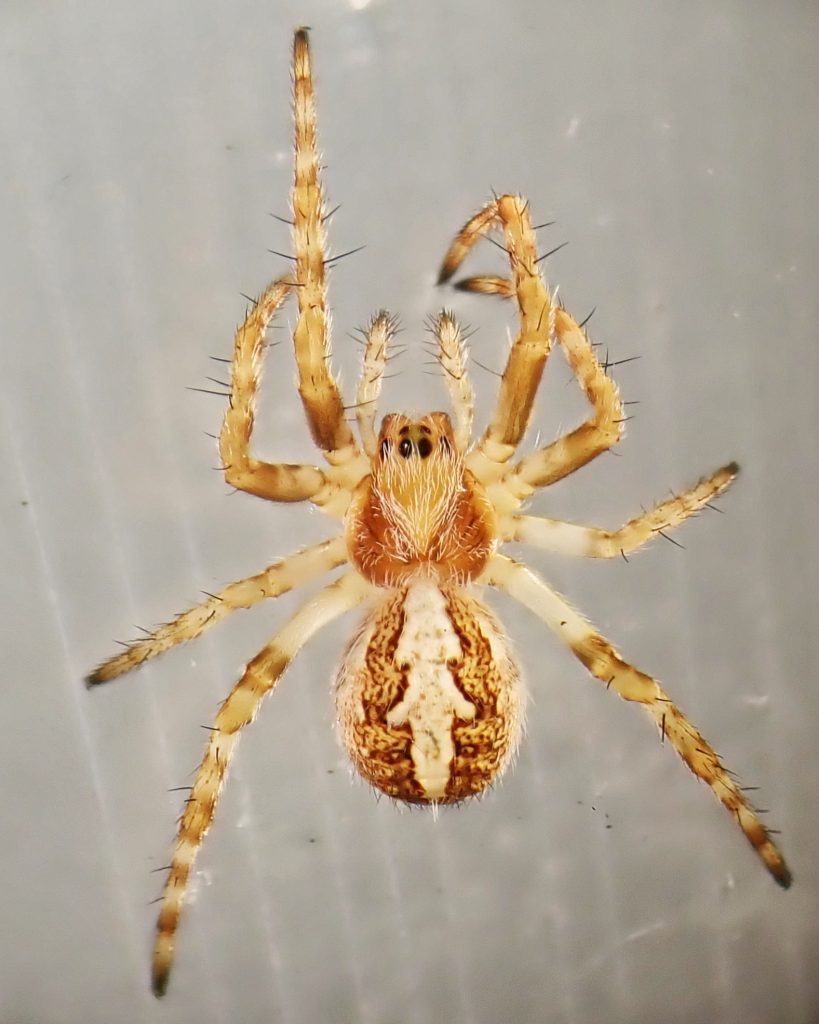
But I did recently realize that, unlike most insects that undergo some sort of metamorphosis, spiders don’t change that much after their second molt, and the basic structures that define a family, and often even a genus, are present in juvenile spiders. And though it is more subject to change, the pattern and coloration of the juveniles are often very similar to those found in adults. Thus, by working the immature spiders through the keys now, I should be able to start getting an idea of what some adult spiders might be when I find them, so I can possibly either skip some steps in the key, or at least just use them to confirm what I’m thinking. I’ve managed to do that with some juvenile running crab spiders (Philodromidae) in the genus Tibellus, and some immature orb weavers in the genus Aculepeira.
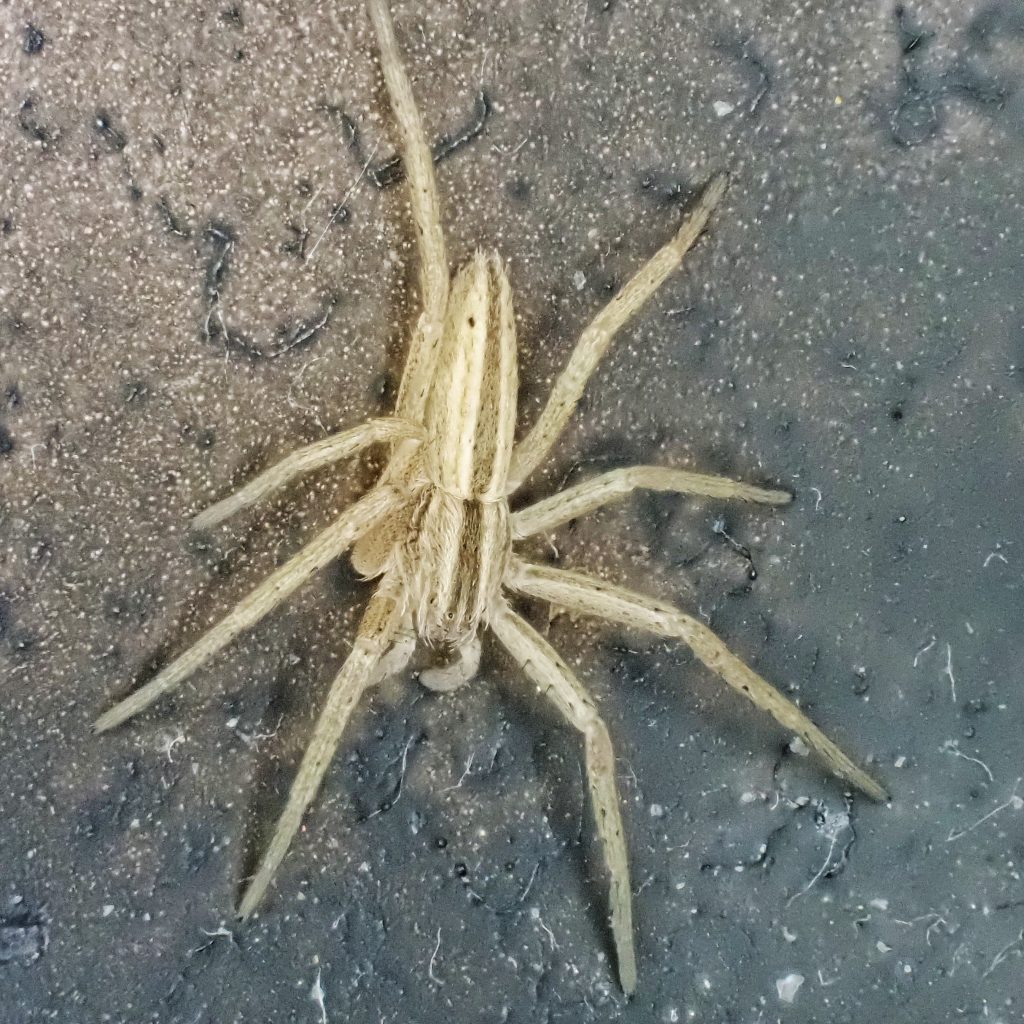
But it is still slow going working my way through the key. I frequently spend a few hours examining them, and trying to get clear photos of the salient diagnostic features, because I really have no faith in my ability to correctly interpret what I’m seeing, and feel that in the interests of limiting misinformation and embarrassment to myself, I need to have an expert (usually Rod Crawford, who has leant his expertise to every spider profile I’ve done this fall) vet my identifications, and he needs good photos to do so (though there is still always the problem of a two dimensional photo representing the 3 dimensional structure I can see with the binocular vision of the stereoscope). But I am getting better, and I’m batting about .700 on the last few batches of specimen photos I’ve sent him. All of which is why, despite the fact that I am spending significant time every day trying to find or identify spiders, I’ve more often been profiling old encounters with moths and birds of late, rather than writing about recent encounters with spiders (the non-spider arachnid Phalangiodes opilio notwithstanding). I simply haven’t gotten the spiders positively identified yet.
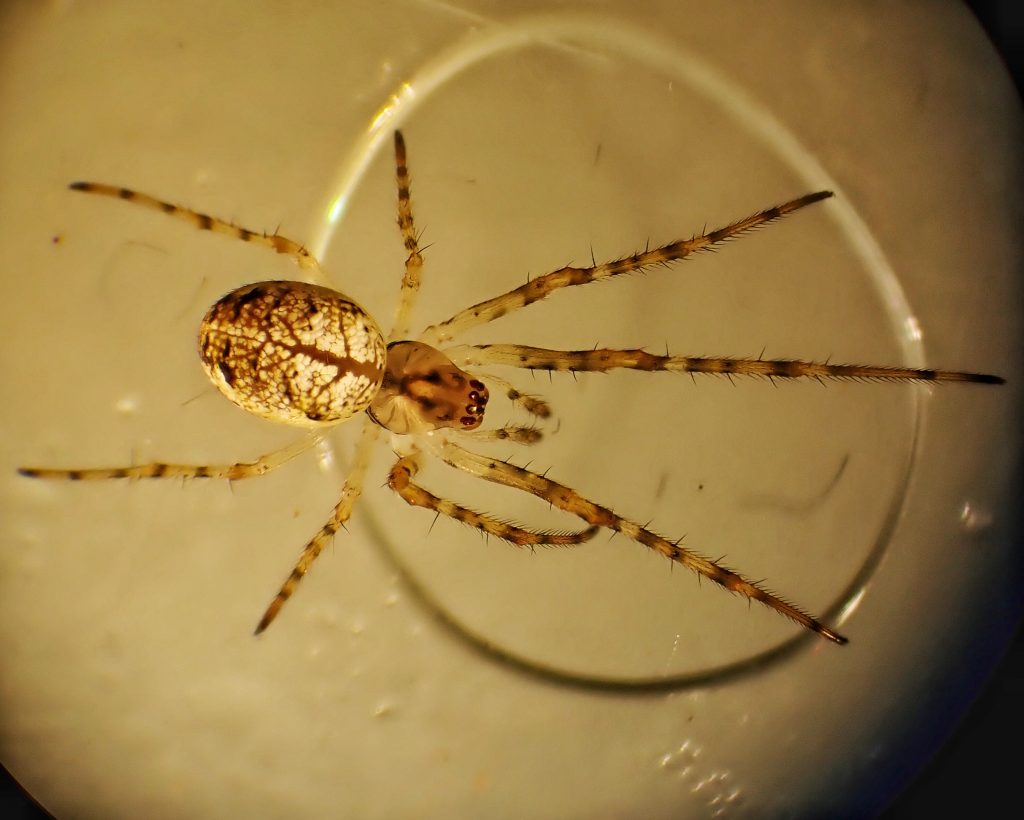
I’m also discovering that finding spiders isn’t as easy as I’d thought it would be, and simply walking the woods and fields looking for webs, and examining the surfaces of trees, rocks, and man made structures, is not necessarily always productive. For one thing the majority of webs I find either contain Sierra dome spiders or cross orbweavers, or they have been abandoned, or I’ve scared the spider into a hidey hole where I can’t find it. But the workaround for these problems has turned out to be using a net to sweep through the grass and brush, and then examining its contents to see what it’s picked up. I have found quite a few spiders this way, though most of them are immature, and I don’t get any feel for the relationship of the spider to its environment doing this. But it is productive! And really pretty fascinating, because there are often dozens of flies, plant bugs, leafhoppers, wasps, grasshoppers and/or other arthropods mixed in with the spiders and bits of leaves, sticks/stems, and seeds. I recently spent several hours unsuccessfully combing the shorelines of two different lakes looking for Dolomedes triton (the six-spotted fishing spider), but the ones I actually found all showed up in my net after sweeping the vegetation along the shore.
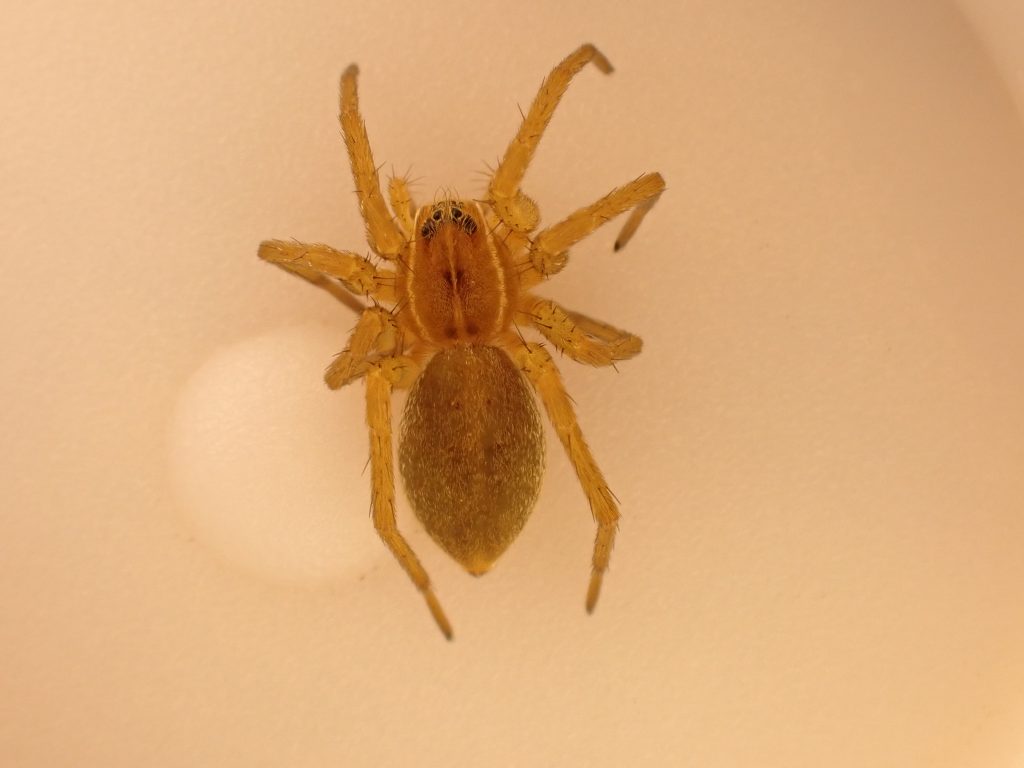
It is turning out to be very difficult to get decent photos of living spiders in the field. With spiders in a web it’s proving to be very tricky to get my camera to focus on the spider, rather than the background, and that’s only pertinent if I can work my way around to the dorsal side of the spider (why are spiders so often facing away from the trail? It seems far more often than mere chance would account for) without either tearing up the web or spooking the spider into hiding. Or their web is up high enough that even at full magnification all I get with a cropped photo is a vaguely spider shaped blob. And with spiders under logs, bark, or rocks, it seems I have the choice to capture them or photograph them, because they seldom stick around long enough for me to do both. Same thing with those I catch in a sweep net.
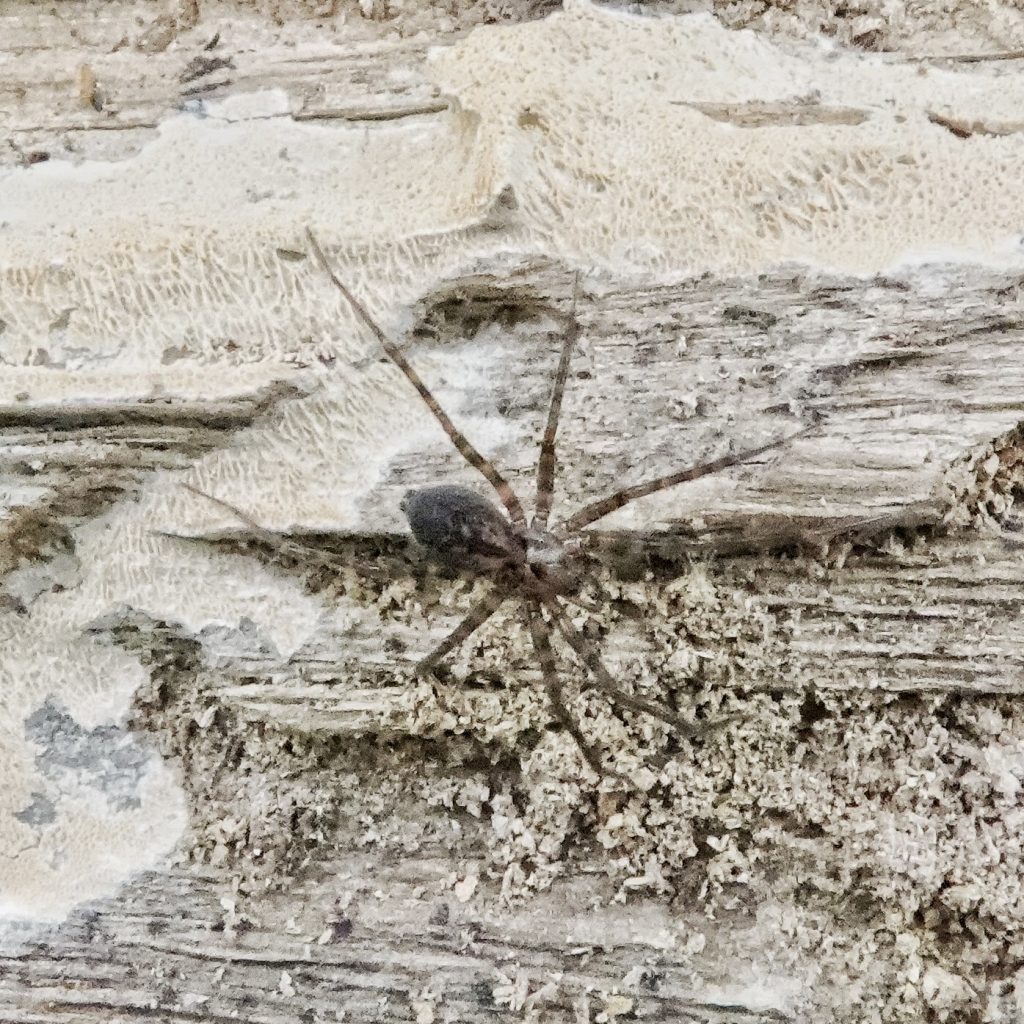
My workaround for these problems is to photograph them in the container after refrigeration, although I had to set up a lighting system that illuminates the inside of the translucent but not transparent containers. I also always try to put then into a Tupperware knockoff that I’ve painted in grayscale, so I can get some different angles, but refrigeration doesn’t seem to calm spiders the way it does insects, and most of the time they hit the ground running when spilled out of the container. All of this is why in my profiles I often have photos of dead spiders floating in alcohol under a stereoscope. Though I do have to say that that is also the best way to get clear and sharply delineated photos of the amazing structures and patterns that make up most spiders, and I almost always have to euthanize them and get them under the scope to identify them anyway.
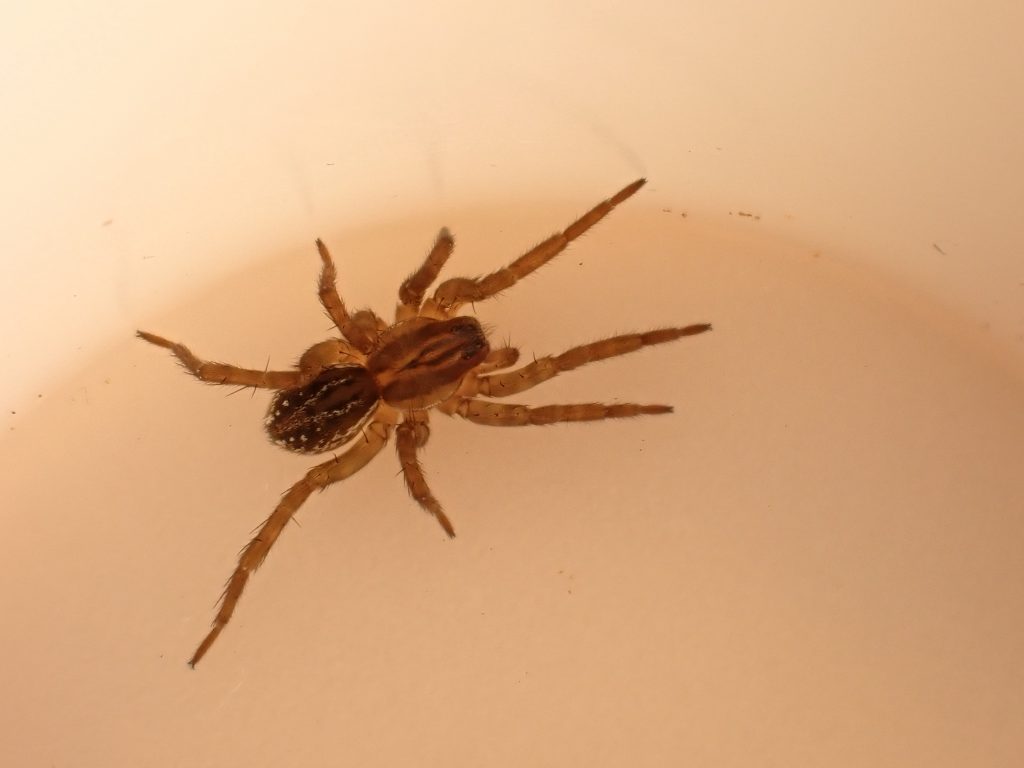
The foregoing may seem like I am whining about how hard this is, but really I’m just trying to show the challenges involved in trying to learn about the spiders, and more importantly, to offer up what I am learning to any budding arachnologists out there, to maybe shorten their learning curve. I am having a blast doing this, and I can think of no better way to spend this fall than doing exactly what I’m doing. And, possibly because I’m something of a masochist, the challenges just make it more compelling. And when things do go well, when I for example find a spider hidden away in a curled leaf and then successfully identify it after navigating the family and genus keys, and then unearthing a key to species of that genus and working through that to a correct answer, as I recently did with a male and female Agelenopsis oregonensis, it is supremely gratifying, precisely because it wasn’t easy.
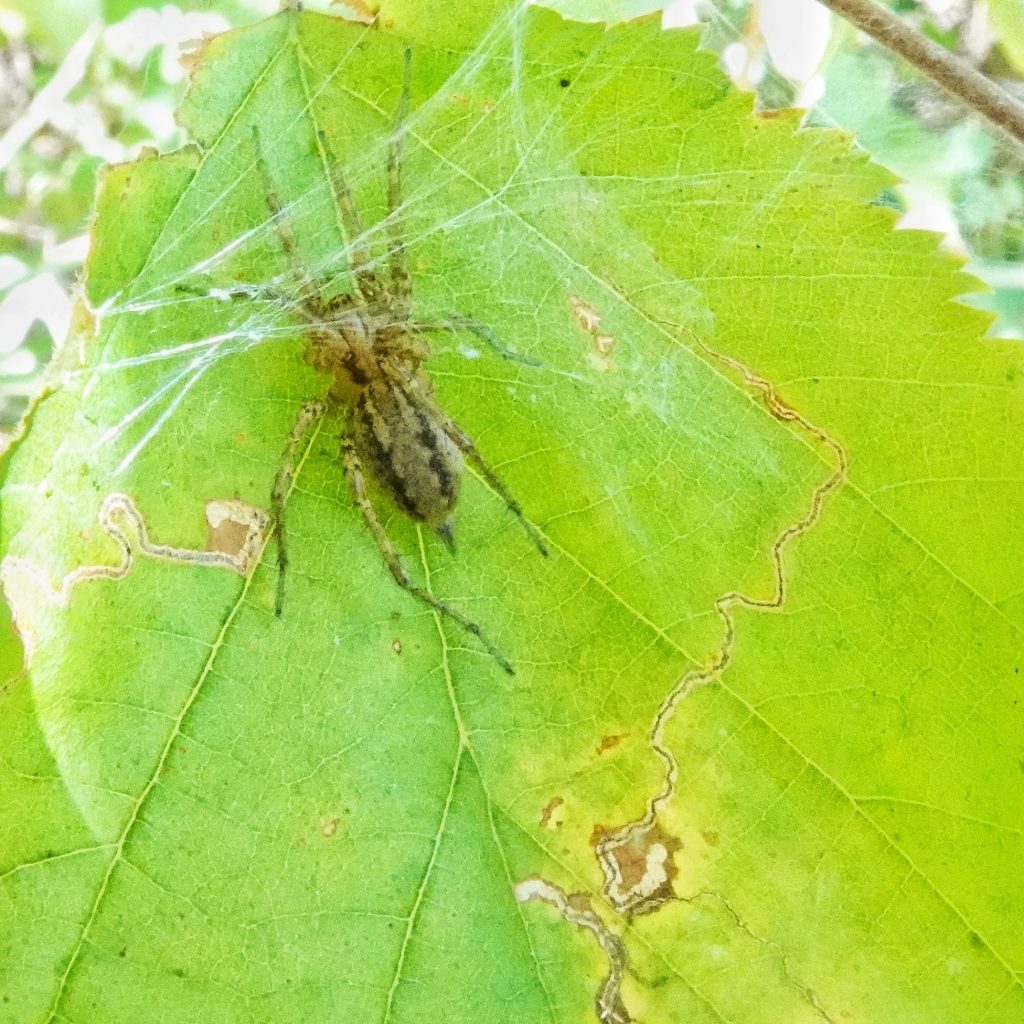
Spiders are my favorite
They are certainly fascinating, Andrea!